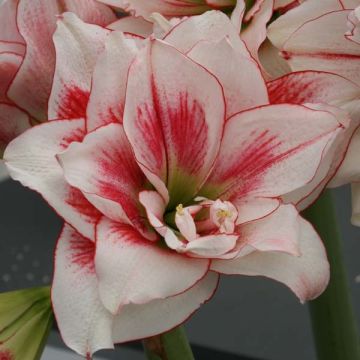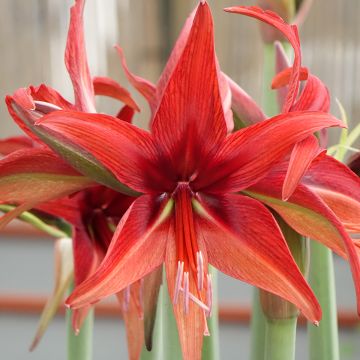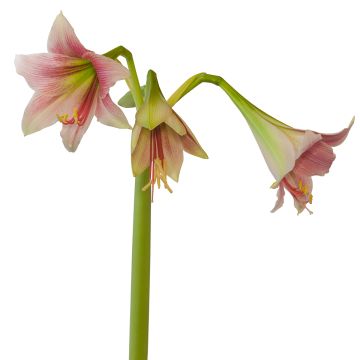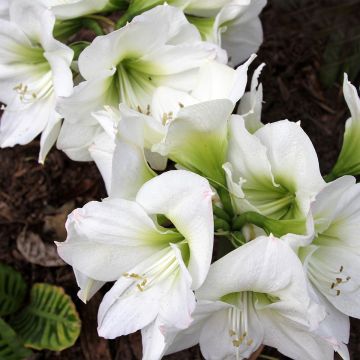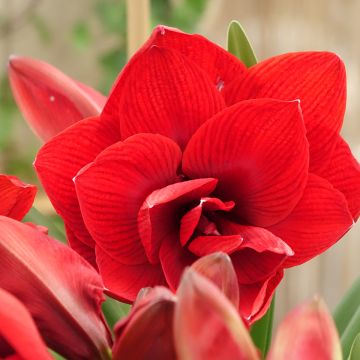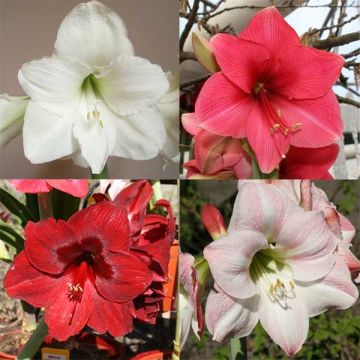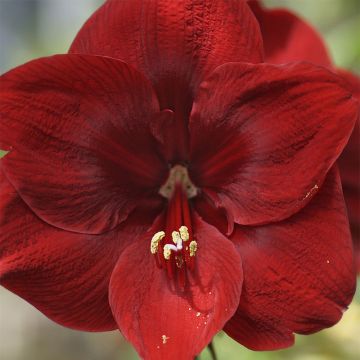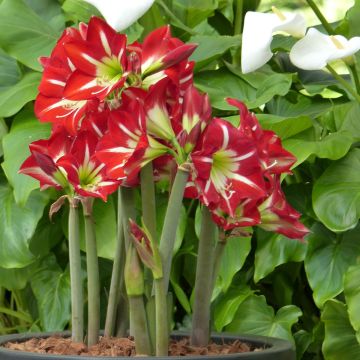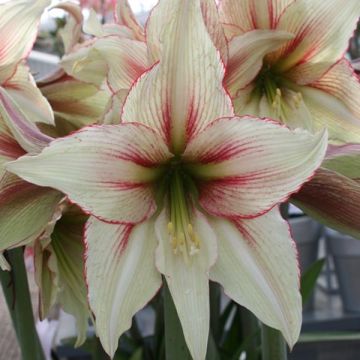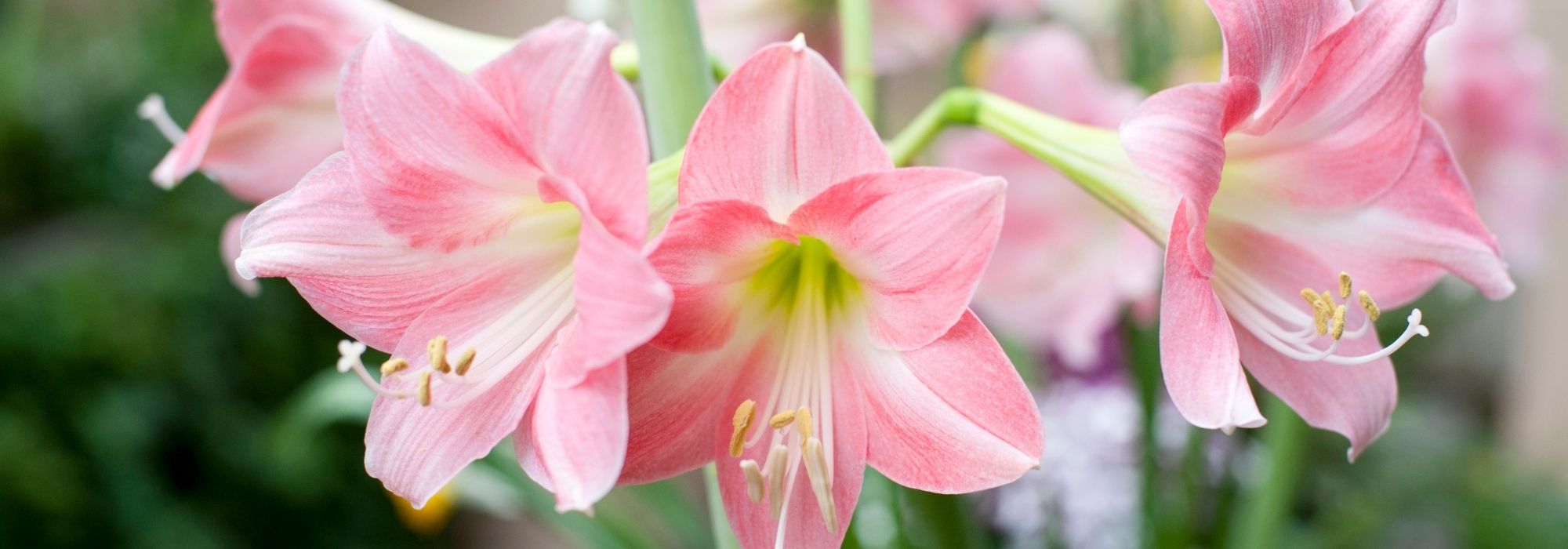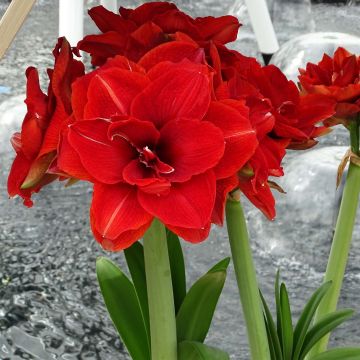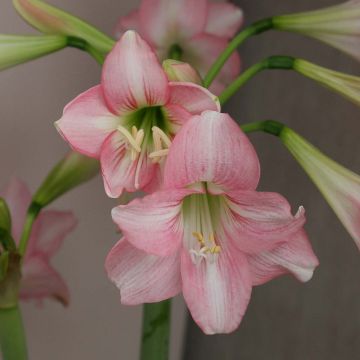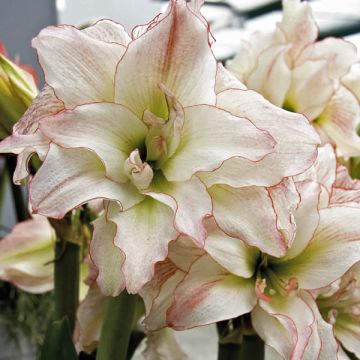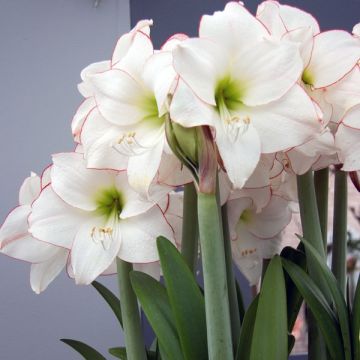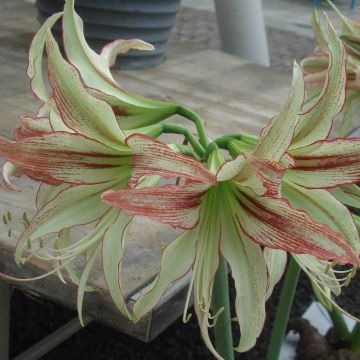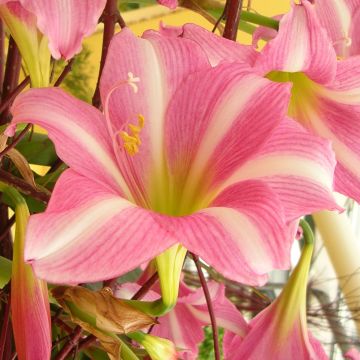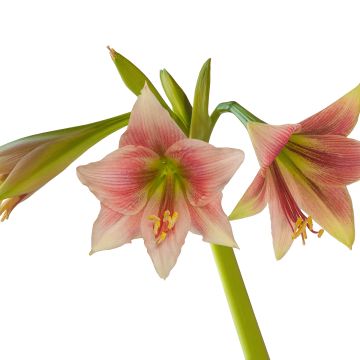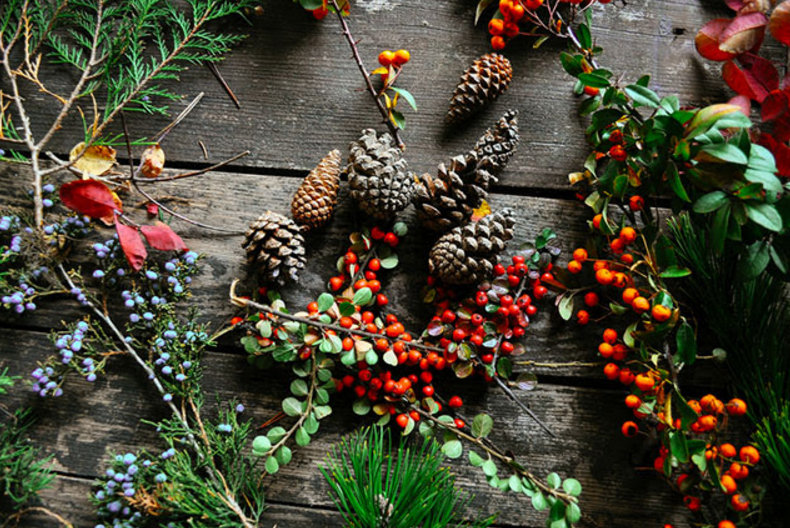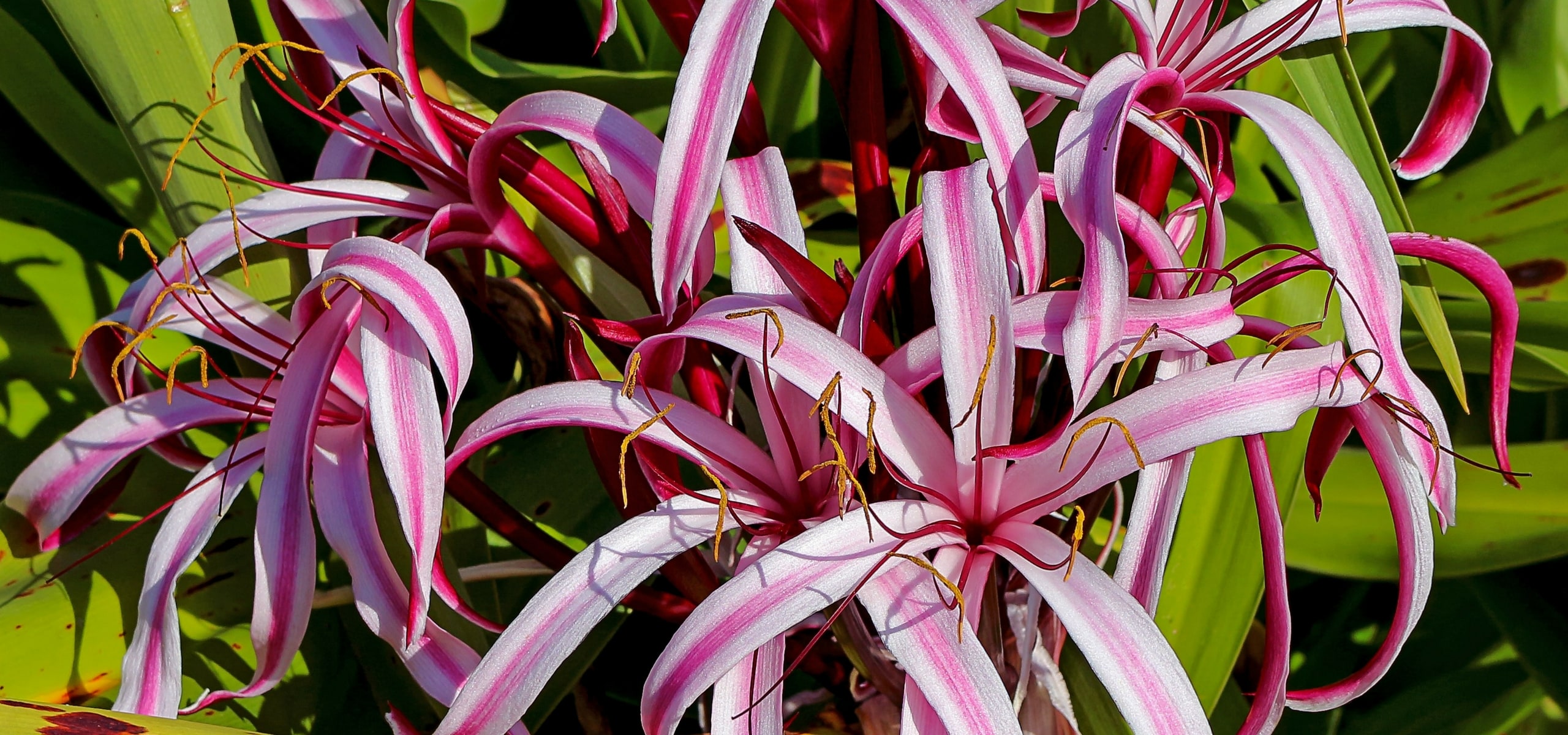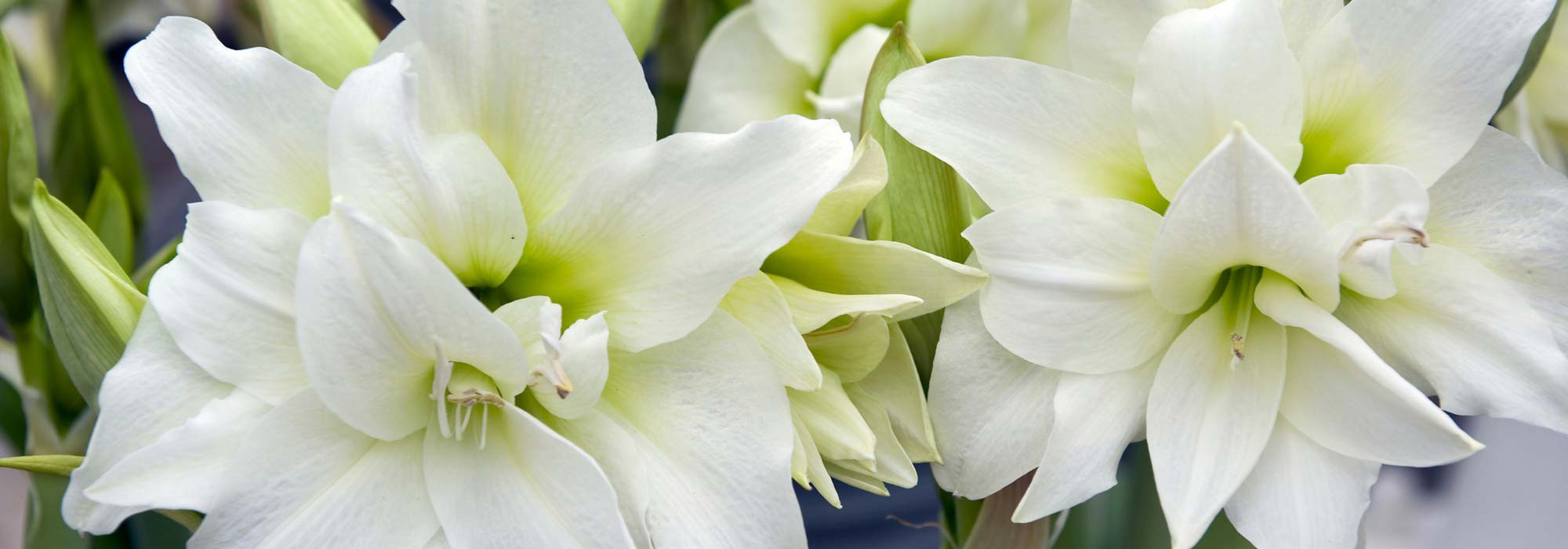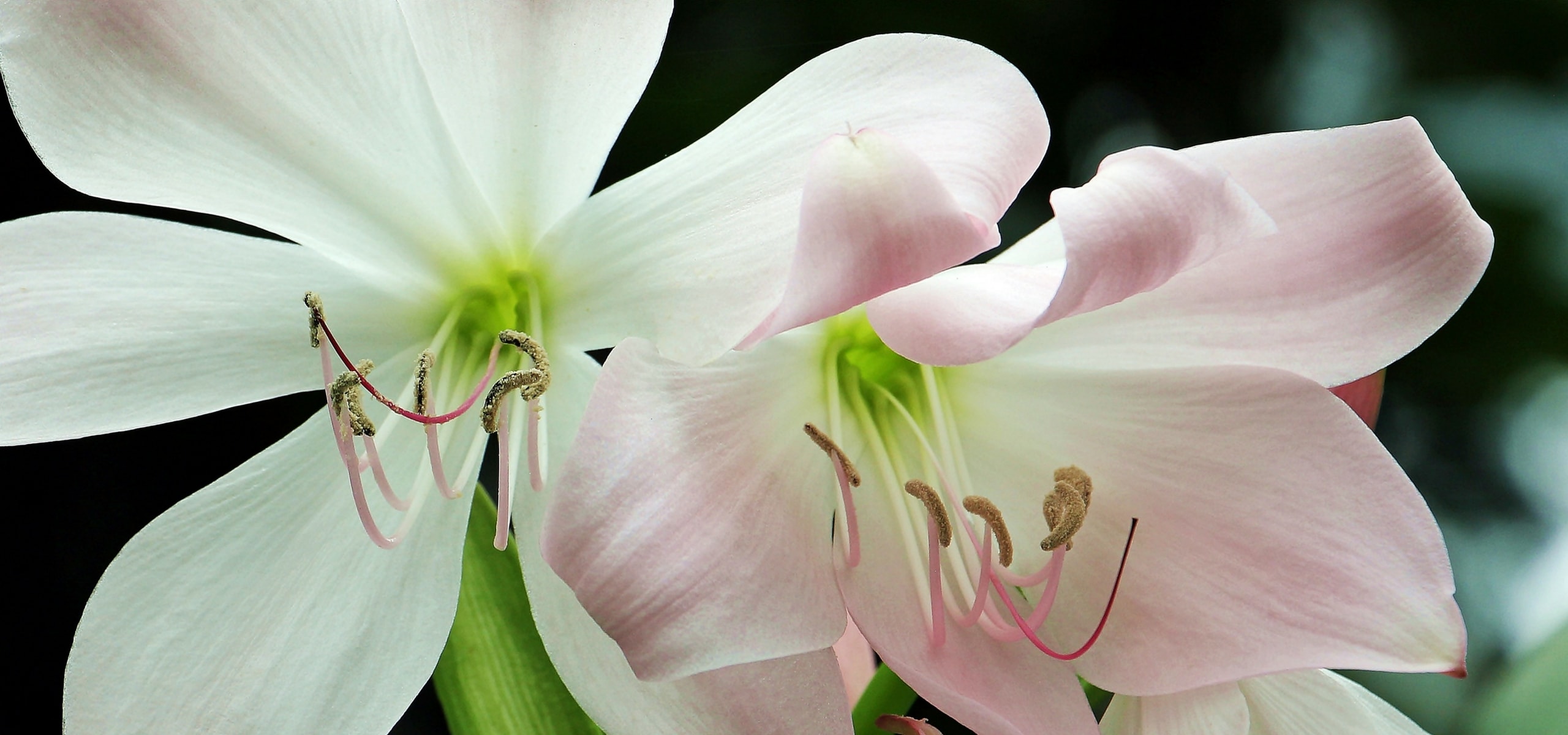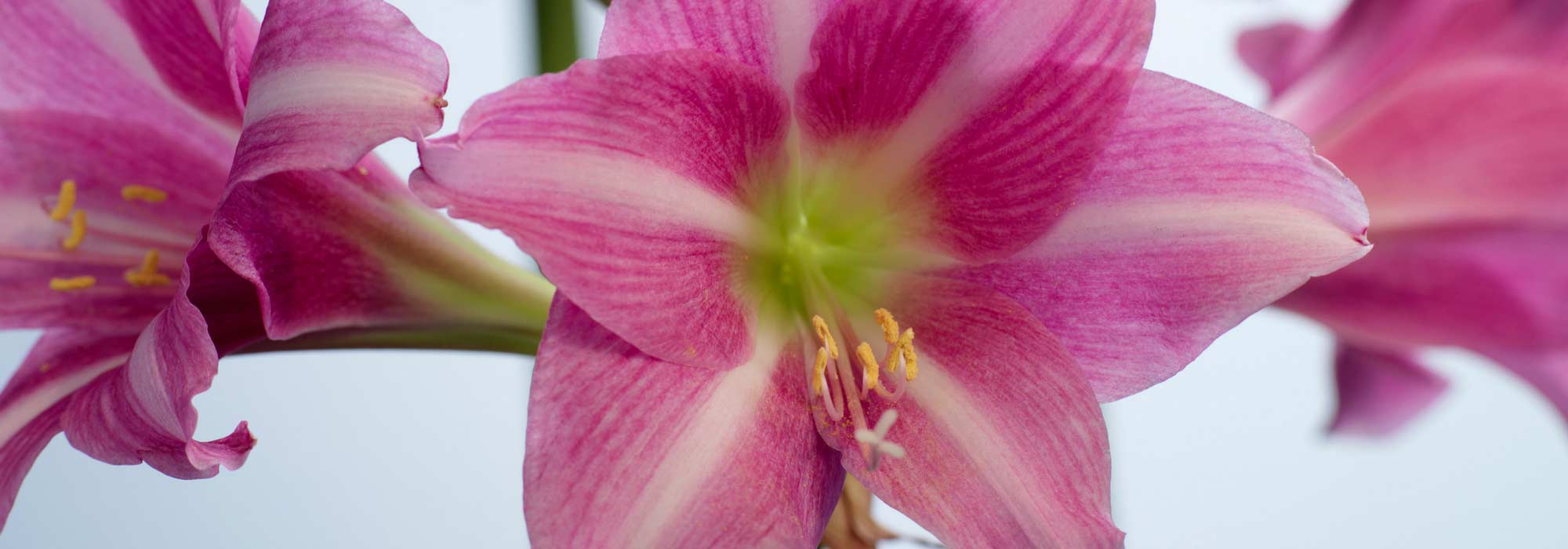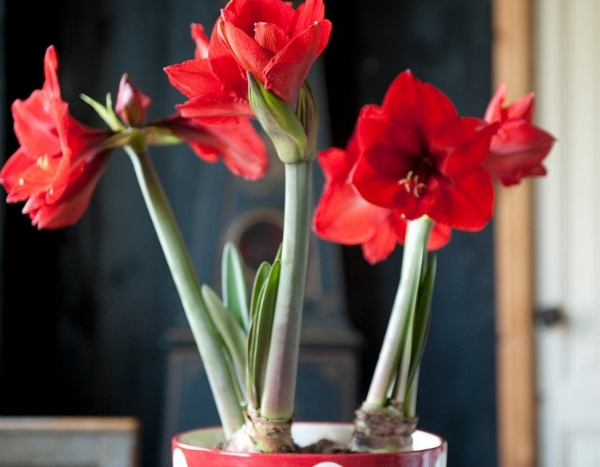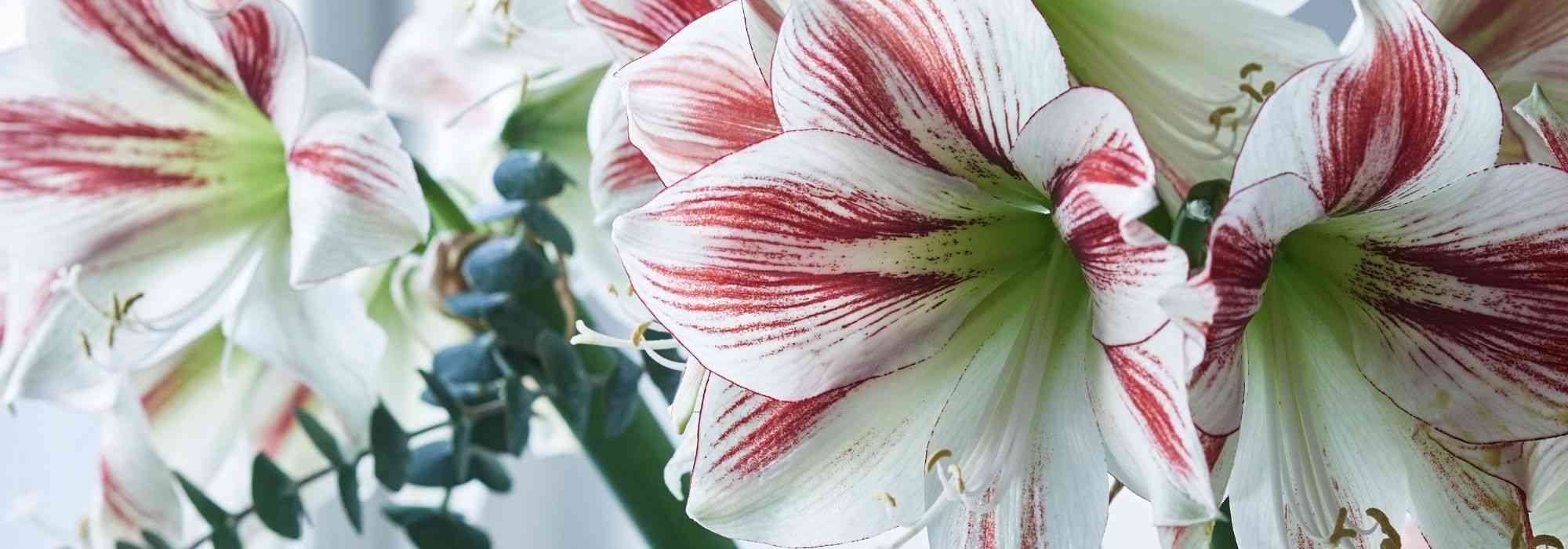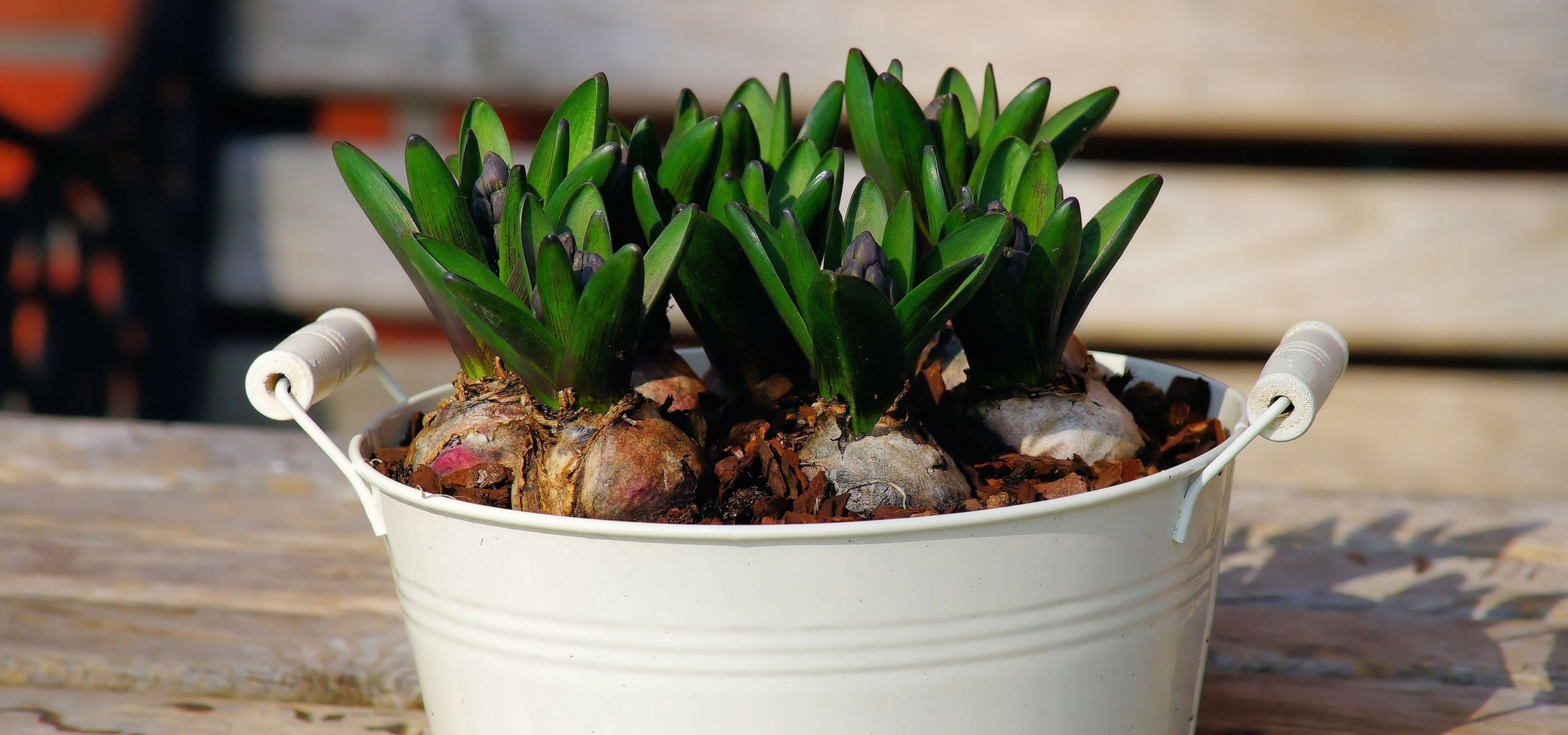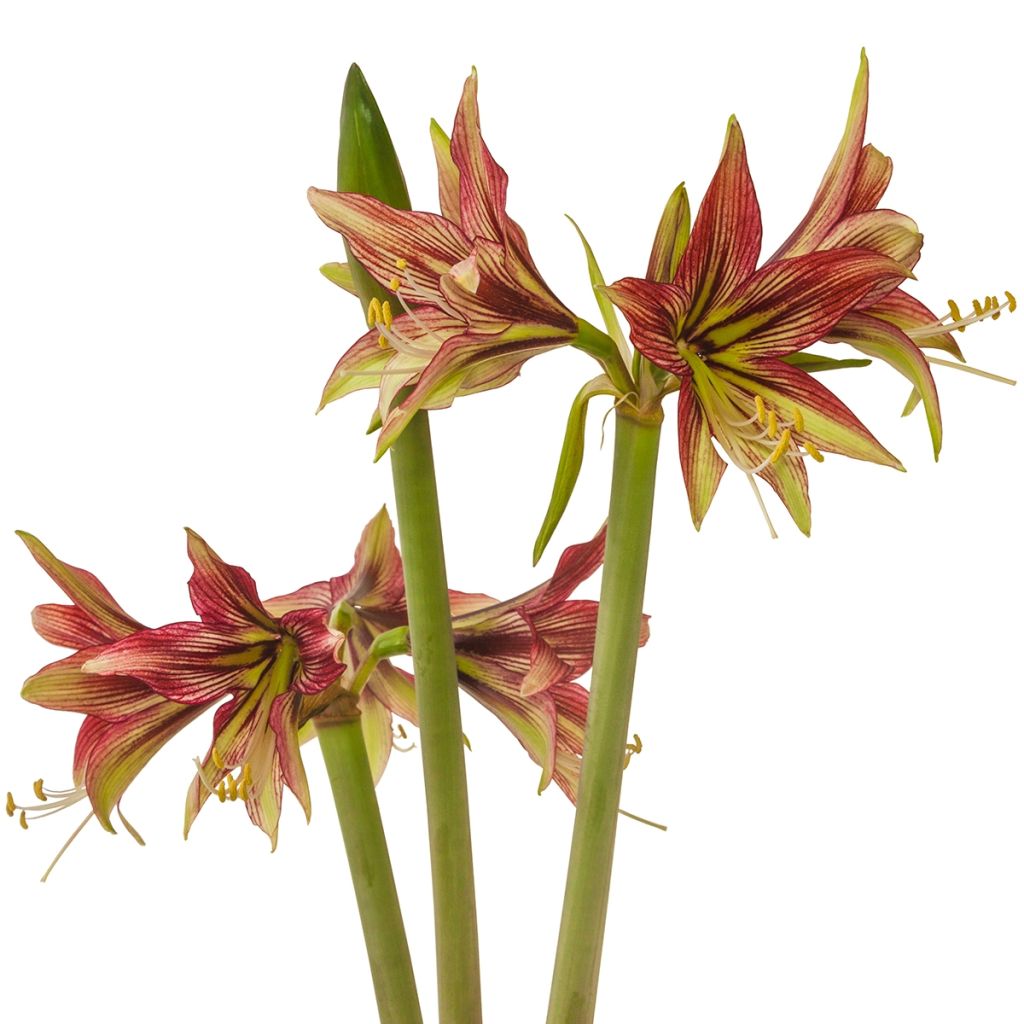

Amaryllis Cybister Mystica - Hippeastrum
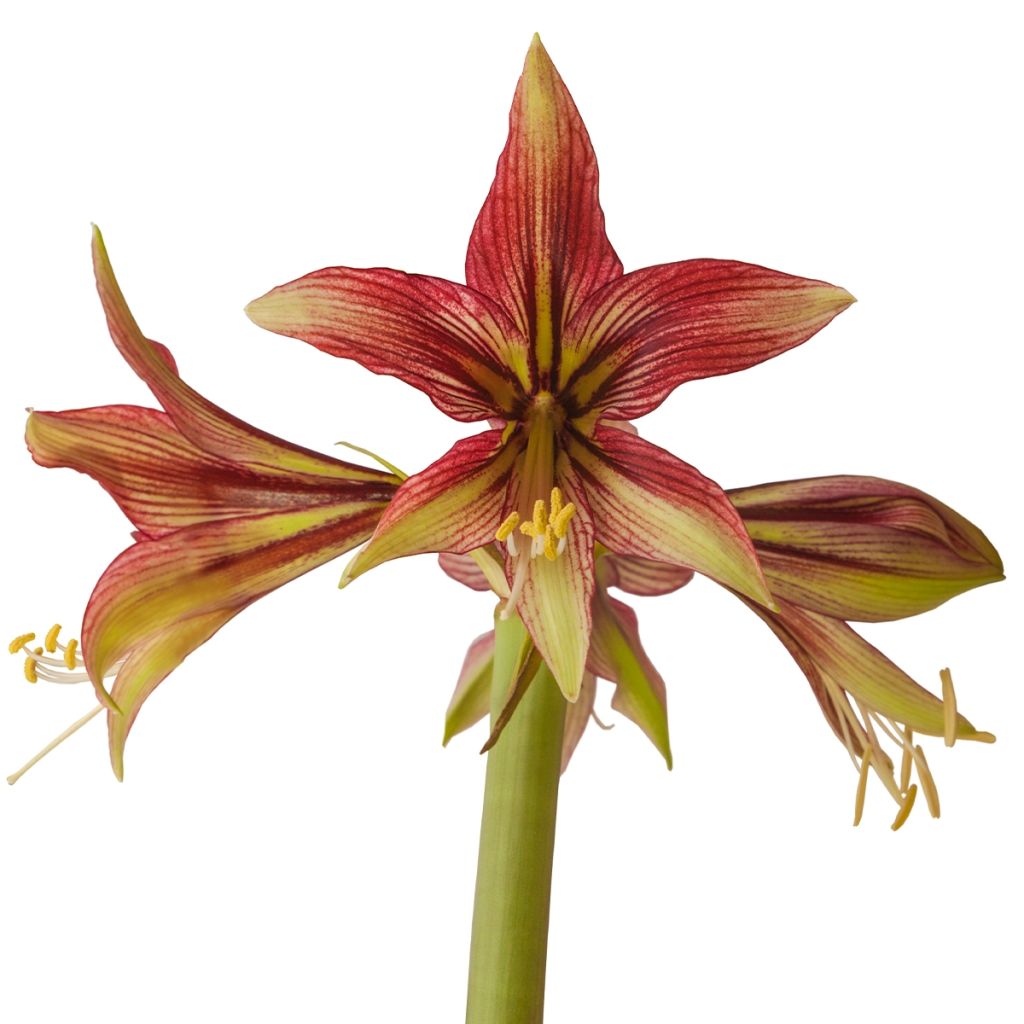

Amaryllis Cybister Mystica - Hippeastrum
Hippeastrum cybister Mystica - Amaryllis
Hippeastrum Cybister Mystica
Amaryllis, Knight's-star-lily
Bulb delivered with 2 flower stems of 20cm bent at 90° to fit in the bag and half cut. Unacceptable!
Hervé, 06/12/2024
Special offer!
Receive a €20 voucher for any order over €90 (excluding delivery costs, credit notes, and plastic-free options)!
1- Add your favorite plants to your cart.
2- Once you have reached €90, confirm your order (you can even choose the delivery date!).
3- As soon as your order is shipped, you will receive an email containing your voucher code, valid for 3 months (90 days).
Your voucher is unique and can only be used once, for any order with a minimum value of €20, excluding delivery costs.
Can be combined with other current offers, non-divisible and non-refundable.
Why not try an alternative variety in stock?
View all →This plant carries a 6 months recovery warranty
More information
We guarantee the quality of our plants for a full growing cycle, and will replace at our expense any plant that fails to recover under normal climatic and planting conditions.
Would this plant suit my garden?
Set up your Plantfit profile →
Description
Hippeastrum cybister 'Mystica' is one of the most beautiful representatives among the group of 'butterfly' Hippeastrum cybister, characterised by spider-like flowers. This stunning variety bears flowers that are not very wide, but have an unusual shape and are beautifully striped with terracotta red on a lime green to pale-yellow background. The bulb produces 2 to 3 flower stems and each stem will bear 4 to 6 flowers, allowing you to enjoy this beauty for several weeks between December and March. A beautiful touch of exoticism in the heart of winter!
Originally from subtropical regions of Central and South America, hippeastrum are frost-sensitive plants belonging to the Amaryllidaceae family, generally grown in pots in our latitudes. In full bloom, the 'Mystica variety' forms a clump 50 to 60cm (20 to 24in) in height and 30cm (12in) in width. The flower is composed of narrow and tapered petals, slightly twisted at the edges, in shades of brick-red and green-yellow. The centre of the flower is apple-green, releasing a bouquet of long, pale-yellow curved stamens with a green base. Four to six flowers, 11cm (4in) in diameter, crown a thick hollow stem that will soon be followed by another, and sometimes by a third. Positioned back-to-back, they form a unique composition together. The medium green leaves are ribbon-like. They turn yellow and dry some time after flowering, while the large bulb enters a dormant state.
Planting an amaryllis is a very rewarding experience. Hippeastrum 'Mystica' is very easy to grow and its growth is extremely rapid. The flowers bloom 6 to 10 weeks after planting. You can enjoy them throughout winter. Plant it at the beginning of November if you want to give it as a Christmas gift. This variety does not need companions to highlight its obvious beauty. You can plant a few simple snowdrop bulbs at its base, just to dress up its somewhat rigid stems. Ideally, position it in the sun in front of a window, for example. Cut the stem when the flowers fade to promote floral regrowth.
The use of the word "amaryllis" is a misuse of language, directly related to an error made in the 18th century. It was Linnaeus himself who used it to name the American species. However, the name was already used for another beautiful flower from South Africa. Conventionally, the name amaryllis was kept for both. To distinguish them, the word "Hippeastrum" was added for the first one and "Belladona" for the second. It must be said that both deserve this name: amaryllis means "sparkling" and, in classical Greek literature, the plant was the subject of a pastoral poem where the beautiful shepherdess Amaryllis dies of a love that will only be accessible to her after a terrible injury. From her blood will emerge beautiful bunches of red flowers. Since then, the term has been synonymous with lofty beauty.
Plant habit
Flowering
Foliage
Botanical data
Hippeastrum
Cybister Mystica
Amaryllidaceae
Amaryllis, Knight's-star-lily
Cultivar or hybrid
Other Hippeastrum - Amaryllis
View all →Planting and care
It thrives in full sun or partial shade in any moist soil. Indoors, place it in bright light. For pot cultivation, leave 2cm (1in) around the bulb and use a heavy pot to prevent it from tipping under the weight of the flower, which tends to lean towards the sun. Use light, well-drained soil that is neutral or slightly acidic. In a pot, leave half of the bulb above the soil to prevent the neck from staying wet after watering and then rotting. This also provides more room for the soil. Plant your amaryllis bulbs from October to January, depending on the desired flowering period, knowing that it takes 6 to 8 weeks between planting and flowering. After flowering, trim the flowers while allowing the foliage to grow. At the end of summer, allow the soil to dry out and cut off the dry leaves. Repot the bulb in fresh soil 6 weeks later.
Planting period
Intended location
Care
Planting & care advice
-
, onOrder confirmed
Reply from on Promesse de fleurs
Haven't found what you were looking for?
Hardiness is the lowest winter temperature a plant can endure without suffering serious damage or even dying. However, hardiness is affected by location (a sheltered area, such as a patio), protection (winter cover) and soil type (hardiness is improved by well-drained soil).

Photo Sharing Terms & Conditions
In order to encourage gardeners to interact and share their experiences, Promesse de fleurs offers various media enabling content to be uploaded onto its Site - in particular via the ‘Photo sharing’ module.
The User agrees to refrain from:
- Posting any content that is illegal, prejudicial, insulting, racist, inciteful to hatred, revisionist, contrary to public decency, that infringes on privacy or on the privacy rights of third parties, in particular the publicity rights of persons and goods, intellectual property rights, or the right to privacy.
- Submitting content on behalf of a third party;
- Impersonate the identity of a third party and/or publish any personal information about a third party;
In general, the User undertakes to refrain from any unethical behaviour.
All Content (in particular text, comments, files, images, photos, videos, creative works, etc.), which may be subject to property or intellectual property rights, image or other private rights, shall remain the property of the User, subject to the limited rights granted by the terms of the licence granted by Promesse de fleurs as stated below. Users are at liberty to publish or not to publish such Content on the Site, notably via the ‘Photo Sharing’ facility, and accept that this Content shall be made public and freely accessible, notably on the Internet.
Users further acknowledge, undertake to have ,and guarantee that they hold all necessary rights and permissions to publish such material on the Site, in particular with regard to the legislation in force pertaining to any privacy, property, intellectual property, image, or contractual rights, or rights of any other nature. By publishing such Content on the Site, Users acknowledge accepting full liability as publishers of the Content within the meaning of the law, and grant Promesse de fleurs, free of charge, an inclusive, worldwide licence for the said Content for the entire duration of its publication, including all reproduction, representation, up/downloading, displaying, performing, transmission, and storage rights.
Users also grant permission for their name to be linked to the Content and accept that this link may not always be made available.
By engaging in posting material, Users consent to their Content becoming automatically accessible on the Internet, in particular on other sites and/or blogs and/or web pages of the Promesse de fleurs site, including in particular social pages and the Promesse de fleurs catalogue.
Users may secure the removal of entrusted content free of charge by issuing a simple request via our contact form.
The flowering period indicated on our website applies to countries and regions located in USDA zone 8 (France, the United Kingdom, Ireland, the Netherlands, etc.)
It will vary according to where you live:
- In zones 9 to 10 (Italy, Spain, Greece, etc.), flowering will occur about 2 to 4 weeks earlier.
- In zones 6 to 7 (Germany, Poland, Slovenia, and lower mountainous regions), flowering will be delayed by 2 to 3 weeks.
- In zone 5 (Central Europe, Scandinavia), blooming will be delayed by 3 to 5 weeks.
In temperate climates, pruning of spring-flowering shrubs (forsythia, spireas, etc.) should be done just after flowering.
Pruning of summer-flowering shrubs (Indian Lilac, Perovskia, etc.) can be done in winter or spring.
In cold regions as well as with frost-sensitive plants, avoid pruning too early when severe frosts may still occur.
The planting period indicated on our website applies to countries and regions located in USDA zone 8 (France, United Kingdom, Ireland, Netherlands).
It will vary according to where you live:
- In Mediterranean zones (Marseille, Madrid, Milan, etc.), autumn and winter are the best planting periods.
- In continental zones (Strasbourg, Munich, Vienna, etc.), delay planting by 2 to 3 weeks in spring and bring it forward by 2 to 4 weeks in autumn.
- In mountainous regions (the Alps, Pyrenees, Carpathians, etc.), it is best to plant in late spring (May-June) or late summer (August-September).
The harvesting period indicated on our website applies to countries and regions in USDA zone 8 (France, England, Ireland, the Netherlands).
In colder areas (Scandinavia, Poland, Austria...) fruit and vegetable harvests are likely to be delayed by 3-4 weeks.
In warmer areas (Italy, Spain, Greece, etc.), harvesting will probably take place earlier, depending on weather conditions.
The sowing periods indicated on our website apply to countries and regions within USDA Zone 8 (France, UK, Ireland, Netherlands).
In colder areas (Scandinavia, Poland, Austria...), delay any outdoor sowing by 3-4 weeks, or sow under glass.
In warmer climes (Italy, Spain, Greece, etc.), bring outdoor sowing forward by a few weeks.






























